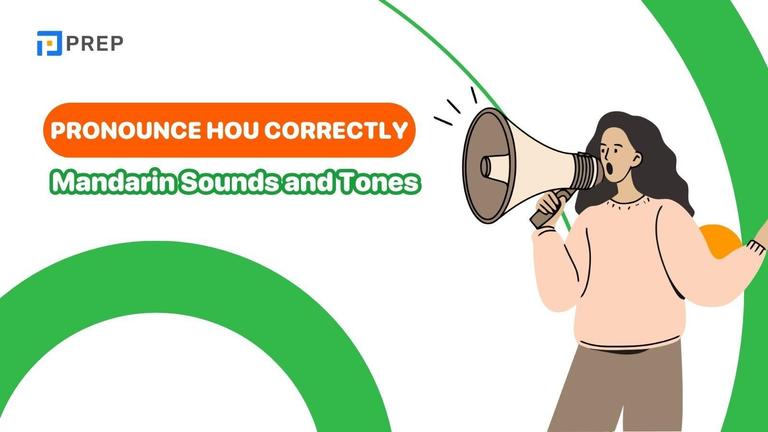Guide to writing Pie chart Writing Task 1 with just 2 steps
The Pie chart Writing Task 1 may not be unfamiliar to those who are preparing for the IELTS. It is a relatively easy task, but do you know how to master this task to achieve a high band score in IELTS Writing Task 1? If not, let's explore how to write Pie chart Writing Task 1 with PREP to score high!

I. What is Pie chart Writing Task 1?
Pie chart Writing Task 1 is a type of chart used to compare different components within a whole. The special feature of this chart is that each component is represented by data (usually in the form of percentages) for a specific object, and the names of the objects are represented with colors or symbols next to them. We can divide this chart into two types:
- Pie Chart with changes over time.
- Pie Chart without changes over time.
Example of a Pie Chart task:
The pie charts compare ways of accessing the news in Canada and Australia. Summarise the information by selecting and reporting the main features, and make comparisons where relevant.
II. How to write Pie chart Writing Task 1
In the following section, let's explore how to write a well-structured Pie chart Writing Task 1 from A to Z through specific steps to help you effectively prepare for the IELTS at home:
1. Writing the Introduction
In the first part - the Introduction of Pie chart Writing Task 1, apply your knowledge of paraphrasing to develop your writing effectively. When introducing how to approach Pie chart Writing Task 1 in the introduction, use the following structures:
- The chart(s) illustrate(s)/ compare(s)/ highlight(s)/ show(s)/,...
- In the overview section, use phrases like the following to summarize the information observed in the task: "It is clear that..."/"Overall..."
For example: The charts below show the comparison of different kinds of energy production in Dutch in five years.
|
|
Subject |
Verb |
WHAT |
WHERE |
WHEN |
| Task |
The charts below |
show |
the comparison of different kinds of energy production |
in Dutch |
In five years |
| Paraphrase into Introduction |
The pie charts |
illustrate |
the proportion of energy produced by different sources |
in Dutch |
in 1995 and 2000 |
➡ Introduction: The pie charts illustrate the proportion of energy produced by different sources in Dutch in 1995 and 2000.
2. Writing the General overview
Similar to other trend-based charts, the Overview section in writing Pie chart Writing Task 1 usually covers two general aspects: trends and magnitudes. Considering the task above, the Overview for the Pie Chart can be written as follows:
- Trend description: The proportion of energy produced by Coal, Gas, Nuclear, and Other increased, while the data for Petrol decreased.
- Magnitude description: Coal and Gas are the two main energy sources in both years.
➡ Overview: It is clear that the proportion of energy generated by petrol decreased, while the figures for the rest of energy sources had an opposite trend.
3. Writing the specific features
The charts below show the comparison of different kinds of energy production in Dutch in five years:
For the Pie Chart Writing Task 1, we can divide the body into two approaches:
- Dividing details by year.
- Dividing details by component.
3.1. Dividing details by year in the Pie chart Writing Task 1
Detail 1: Comparing components in 1995 (mention the data from largest to smallest. Note: If there is a component called "Other," it should be mentioned last regardless of whether the data is large or small):
- The proportion of energy generated by Coal is the highest (29.8%), with slightly lower figures for Gas and Petrol.
- Nuclear accounts for only 6.4% of the total energy, while the figures for other sources are the lowest.
Coal-fired energy accounted for the highest proportion of total energy production in France in 1995, at 29.80 percent. Gas and Petro had slightly lower percentages, at 29.63 percent and 29.27 percent, respectively. Meanwhile, nuclear power generated only 6.40 percent of total energy, with other sources accounting for nearly 5 percent of total energy.
Detail 2: Comparing trends for components up to 2000:
- The proportion of energy generated by Coal slightly increased and maintained the highest figure (30.93%).
- The figures for Gas increased, while the figures for Petrol decreased significantly.
- Both Nuclear and Other components showed a significant increase.
The percentage of energy derived from coal increased slightly in 2000, but it remained the highest figure in the graph, at 30.93 percent. The figure for Gas increased gradually to 30.31 percent, while the figure for Petrol dropped by nearly 10%. The figures for Nuclear and Other sources increased dramatically to 10.10 percent and 9.10 percent, respectively.
3.2. Dividing details by component in the Pie chart Writing Task 1
Detail 1: Comparing the two groups, Coal and Gas (the two groups with the highest figures, both increasing):
- The proportion of energy generated by Coal was the highest (29.8%) in 1995, with a slight increase after 10 years.
- Similarly, the figures for Gas were 29.63%, with a slight increase until 2000.
Coal energy accounted for the highest proportion of total energy production in France in 1995, accounting for 29.80 percent of total energy production, and this figure increased by about 1% to 30.9 percent in 2000. Similarly, Gas generated 29.63 percent of energy in the first year, rising to 30.1 percent five years later.
Detail 2: Other groups (others):
- The proportion of energy generated by Nuclear and Other increased by approximately 5%.
- In contrast, the figures for Petrol decreased to 19.55%.
In terms of the remaining energy sources, the proportion of energy produced from nuclear power and other sources increased by about 5%, to just over 10% and 9%, respectively. Petrol, on the other hand, saw its share drop from 29.27 percent in 1995 to around a fifth in 2000.
III. IELTS vocabulary about Pie chart Writing Task 1
There are two vocabulary topics related to Pie chart Writing Task 1 that you should memorize to effectively practice at home and perform well if you encounter Pie chart Writing Task 1 in the actual exam:
Vocabulary for Describing Data in Fractions:
|
Percentage |
Fraction |
Example |
|
80% |
four-fifths |
The number of students in 2022 will increase four-fifths compared to the number of students 4 years ago |
|
75% |
three-quarters |
We expect a spike in about three-quarters of the rate of population growth |
|
70% |
seven in ten |
The number of people who died in the famine in 1945 was seven in ten people at that time |
Vocabulary for describing Pie chart Writing Task 1:
|
Vocabulary for describing Pie chart Writing Task 1 |
Example |
|
Account for/take up/ make up /consist of /include /comprise/ contribute/ /constitute + number or percentage |
The number of smartphone users in 2022 accounts for about 56% of the total number of people nationwide |
|
Account for a bigger (or smaller) share/ Make up a bigger (or smaller) proportion |
This emotion of surprise accounts for a bigger share than other emotions with 24.9% |
IV. Pie chart Writing Task 1 sample
1. Prompt
The chart shows the differences how three countries learn English in 2010 and 2015.

2. Sample
The pie charts depict English language learning patterns in three countries between 2010 and 2015. In both years, daytime learners dominated in all countries, with the exception of country A, where there was a shift from studying at night to online learning.
It is clear that in 2010, half of the people polled preferred daytime English classes, which remained constant five years later. In 2010, 34 percent of students preferred online learning, followed by a quarter of students (16%) who preferred night classes. While the former has significantly decreased to 20%, the latter has more than doubled to 30% in 2015. Within five years, the proportion of day and night leamers in country 8 decreased from 53 percent to 50 percent and 33 percent to 20 percent, respectively. Online learning, on the other hand, experienced a surge in popularity during this time, with figures doubling from 14% to 30%.
In Country C, the shift to online learning was the most noticeable, with a fourfold increase from 5% in 2010 to 20% in 2015, compared to a minor increase in daytime learners from 45 to 50% and a significant drop in night learners from 50% to 30%.
In addition to these vocabulary topics, you can refer to some sample Pie Chart tasks in IELTS Writing Task 1 to practice effectively!
V. Conclusion
The above is a complete guide on how to write Pie chart Writing Task 1 from A to Z, which you should refer to for effective IELTS Writing preparation at home. If you are looking for an IELTS study plan, be sure to check out the IELTS preparation roadmap at Prep.

Hi I'm Chloe, and I am currently serving as an Product Content Administrator at Prep Education. With over five years of experience in independent online IELTS study and exam preparation, I am confident in my ability to support learners in achieving their highest possible scores.
Comment
Premium content
View allPersonalized roadmap
Most read












